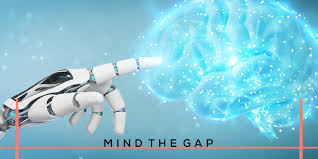Source: analyticsinsight.net
Machine learning depends on data scientists to handle the ML configurations and data inputs
Machine Learning (ML) is constantly being adopted by diverse organizations in an enthusiasm to acquire answers and analysis. As the embracing highly increases, it is often forgotten that machine learning has its flaws that need to be addressed for acquiring a perfect solution.
Applications of artificial intelligence and machine learning are using new tools to find practical answers to difficult problems. Companies move forward with the emerging technologies to get a competitive edge on their working style and system. Through the process, organizations are learning a very important lesson that one strategy doesn’t fit for all. Business organizations want machine learning to do analysis on large data, which is complex and difficult. They neglect the fact that machine learning can’t perform on diverse data storage and even if it does, it will conclude with a wrong prediction.
Analysing unstructured and overwhelming large datasets on machine learning is dangerous. Machine learning might conclude with a wrong solution while performing predictive analysis on such data. The implementation of the misconception in a company’s working system might drag down its improvement. Many products that incorporate machine learning capabilities use predetermined algorithms and many diverse ways to handle data. However, each organization’s data has different technical characteristics that might not go well with the existing machine learning configuration.
To address the problems where machine learning falls short, AutoML takes head-on in the company’s data analysis perspective. AutoML takes over labour intensive job of choosing and tuning machine learning models. The new technology takes on many repetitive tasks where skilful problem definition and data preparation are needed. It reduces the need to understand algorithm parameters and shortening the compute time needed to produce better models.
Machine Learning is not Sorcery
Machine learning is an application of artificial intelligence that provides systems with the ability to automatically learn and improve from experience without being explicitly programmed. The technology focuses on the development of computer programs that can access data and use it for themselves. It is a model created and trained on a set of previously gathered data, often known as outcomes. The model can be used to make predictions using that data.
However, machine learning can’t get accurate results all the time. It depends on the data scientist handling the machine learning configurations and data inputs. A data scientist studies the input data and understands the desired output to solve business problems. They choose the apt mathematical algorithm from a dozen and tune those parameters called ‘hyperparameters’ and evaluate the resulting models. The data scientist has the responsibility to adjust the algorithm’s tuning parameters again and again until the machine learning model produces the desired result. If the results are not tactic, then the data scientist might even start from the very beginning.
Machine learning system struggles to function when the data is too large or unorganised. Some of the other machine learning issues are,
• Classification- The process of labeling data can be thought to as a discrimination problem, modeling the similarities between groups.
• Regression- Machine learning staggers to predict the value of a new unpredicted data.
• Clustering- Data can be divided into groups based on similarity and other measures of natural structure in data. But, human hands are needed to assign names to the groups.
Machine learning problems
As mentioned earlier, machine learning alone can’t address the datasets of an organisation to find predictions. Here are some reasons why tuning a machine learning algorithm is challenging to choose and how AutoML can prove to be useful at such instances.
Choosing the right algorithm: It is not always obvious to choose a perfect algorithm that might work well for building real-value predictions, anomaly detection and classification models for a particular data set. Data scientists have to go through many well-known algorithms of machine learning that could suit the real-world situation. It could take weeks or even months to come up with the right algorithm.
Selecting relevant information: Data storage has diverse data variables or predictors. Henceforth, it is hard to tell which of those data points are significant for making a decision. This process of selecting relevant information to include in data models is called ‘feature selection.’
Training machine learning models: The most difficult process in machine learning is to choose a subset of data that can be used for training a machine learning model. In some cases, training against some data variables or predictors can increase training time while actually reducing the accuracy of the ML model.
AutoML helps machine learning out of the chaos
Automated machine learning (AutoML) basically involves automating the end-to-end process of applying machine learning to real-world problems that are actually relevant in the industry. AutoML makes well-educated guesses to select a suitable ML algorithm and effective initial hyperparameters. The technology tests the accuracy of training the chosen algorithms with those parameters and makes tiny adjustments, and tests the results again. AutoML also automates the creation of small, accurate subsets of data to use for those iterative refinements, yielding excellent results in a fraction of the time.
In a nutshell, AutoML acts as a right tool that quickly chooses, builds and deploys machine learning models that deliver accurate results.
